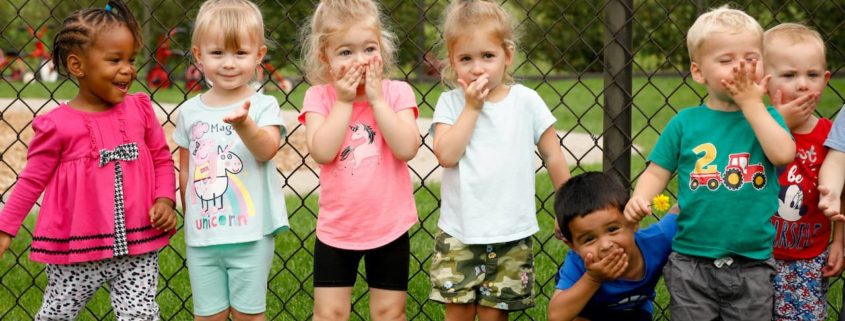As the new school year rolls around, you may be looking into what preschool to send your child to. You’ll be researching programs and investigating requirements to see where your child will best fit. One of these requirements may be a preschool potty training policy. That’s right — the time has finally come to make sure your child is potty trained and ready for this new chapter of life. Read on to learn more about preschool potty training policies and tips for potty training your child.
Preschool Potty Training Requirements
So, does a child have to be potty trained for preschool? The answer depends on the program your child is enrolled in.
In general, most programs for children ages three and up will require that your child be potty trained before starting. Programs for younger children often won’t require potty training and will provide information regarding how they assist in the potty training process.
The best course of action is to contact the specific school your child will be attending to verify their preschool potty training policy.
Tips for Potty Training Your Child
As preschool nears, potty training your child may be on your list of preparations for the transition into the school environment. But how do you potty train your child?
There are a few tips and tricks you can follow to train your child and get them ready to meet preschool potty training policies. Keep reading to learn what these tips are and how to prepare for this new stage in your child’s life.
Meet with the Teacher
Preschool teachers are often equipped with the knowledge and experience that can help you with potty training your child. If your child is attending a preschool that does not have a potty training requirement, you may be able to enlist the assistance of the teacher with potty training. It can also be helpful to check in with your child’s teacher about potty training progress and ensure they’re on the right track.
Pack Extra Diapers
In the situation that your child is enrolled in a preschool without a potty training policy, you’ll want to pack additional diapers in their bag. This way, your child will be prepared with all the supplies they need in the instance of an accident and won’t need to sit in the discomfort of their dirty diaper all day.
Create a Schedule
As you potty train your child, try to stick to a routine schedule. It may be beneficial to have your child try and use the bathroom after each meal since this may best match the bathroom breaks at preschool as well. As your child becomes more familiar with this routine, it will make using the bathroom more comfortable over time.
Use a Reward System
Negative reinforcement to potty training often leads to more accidents and a decreased motivation to continue training. Instead, consider implementing a reward system that encourages your child each time they successfully use the bathroom on their own.
Stay Patient
Children are great at picking up on parental emotions, so staying patient is essential to reducing your child’s discomfort and stress. Keep a positive mindset and try not to react negatively if an accident occurs as it can be discouraging for your child.
Frequently Asked Questions
At what age should you start potty training your child?
On average, children are ready to begin potty training between 18 and 24 months. However, some children may need more time before they feel comfortable potty training. It’s important not to rush your child into this new chapter of life as the added pressure can delay training.
What are the signs your child is ready for potty training?
Some of the major signs that your child may be ready for potty training include mimicking bathroom behaviors of others in the household and hiding to use the bathroom. Your child may also begin sitting on the potty for extended periods of time.
What should you do if your child is upset with potty training?
The first step is to not force your child to use the bathroom. Forcing them to try and potty train will likely increase their discomfort and make them less interested in training. Be patient and do what you can to ease your child’s fears. Try using a positive reward system to encourage bathroom usage.
When should you switch from diapers to underwear?
Once your child begins showing discomfort with their diapers, it may be time to switch to underwear. It may be beneficial to start with purchasing the underwear and introducing them to your child as an option. Let them lead the transition slowly so they feel comfortable switching from their normal snug-fit diapers to regular underwear.
How should you respond to accidents?
Reacting negatively can discourage your child from wanting to continue with potty training. Instead, be patient and comfort your child. Accidents are bound to happen during the potty training process, but going back to the basics and offering encouragement can help reduce those accidents.
Access Helpful Resources with Cadence Education
As you navigate potty training, don’t be afraid to lean on your child’s preschool for additional assistance. Toddler care programs like the ones offered at Cadence Education have trained professionals ready to help you and your child through the potty training process. Our school also offers additional resources to help your potty training days run smoothly.
Contact Cadence Education today or find a school near you to learn more about our preschool potty training policies and program options!

